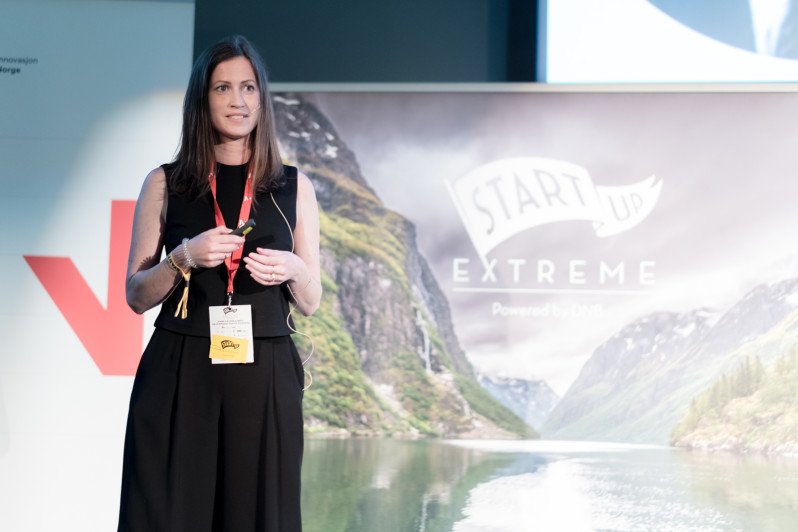Social media influencers are a relatively new phenomenon that has emerged in the last few years. It has opened up a completely new channel for marketing departments to exploit, but it’s still rife with pitfalls.
Startups are nevertheless trying to take advantage. Marie Mostad is co-founder and COO of Oslo-based Inzpire.me, which has developed a marketplace to build connections and reduce friction between smaller brands and social media influencers.
Mostad, who spoke to tech.eu at the Startup Extreme conference in Bergen last month, previously worked at Boston-based Mimo, which made a smart baby monitor. She would seek out potential influencers that could promote the product, but found it time-consuming.
“I spent a lot of time searching hashtags on Instagram like #babybump to find potential influencers,” said Mostad. Tools for startups and SMBs to access or communicate with influencers weren’t available, she said.

This eventually led to the founding of Inzpire.me with CEO Mats Lyngstad, who previously worked on marketing accounts at Facebook but felt the potential of influencers was still untapped.
Right now, the company is relying on reaching out to influencers to get them on the platform and gradually build the network, which has around 80 brands and 9,000 influencers.
Cutting out the middlemen
Its aim is to be a “self-service platform” that exists in the background, providing data and insights to both brands and influencers.
“It’s free to register and we charge a 5% service fee on the transactions to influencers,” explained Lyngstad.
“What we’re trying to do actually is remove the middleman,” added Mostad, recalling her time in Boston communicating with different contacts that would help pick out influencers.
“Very often it would be not the right people for my brand, so we wanted to do it differently and help the brands by using data to make it easier for them to make the decision but let the brand decide who would be a good fit for them.”
Brands on the platform can use filters to find the right social media personality for them.
“Let’s say you’re a food brand and you want influencers on Instagram with more than 50,000 followers in Paris,” she explained. “You can just apply those filters and you will get a list of influencers. Now we want to take it one step further. We want to make algorithms that will just make that suggestion to the brand.”
Lyngstad said that influencers give brands three key components that traditional channels may not: distribution, credibility, and content. This is especially true for reaching new markets and audiences where the influencer may have credibility among that local market and can create locally-focused content that the brand may not have been able to.
Growing pains
The market is still very nascent. Many of its players are jumping from platform to platform. Whereas Snapchat was the in-thing for many influencers, Instagram has regained its foothold at the top, according to Inzpire.me. “Even though Instagram is the most popular channel, at least in Europe, you never know what platform will be the most popular next year,” said Mostad.
As Lyngstad points out, a lot of the fees charged by influencers can vary wildly. At the same time, influencers’ credibility and reach can be called into question.
“Over the next years, the market will be structured in a way, there will be built infrastructure like ours that will make things more professional. You will have influencers that will fall off because they are not able to maintain credibility and then you will have professional ones that will keep going,” said Lyngstad.
For some critics, the area of influencer marketing is untested and ultimately unsustainable. For proponents, these are normal growing pains for an emerging marketing method. Inzpire.me, of course, has skin in the game and agrees with the latter.
However, this swell of influencer marketing has also attracted the attention of lawmakers, namely the advertising authorities, who have warned influencers about marking their content as sponsored. In the US, the Federal Trade Commission has turned its eyes on influencers and most recently Instagram began rolling out a feature to make it easier to add “paid” disclaimers.
Inzpire.me requires the influencers on its marketplace to disclose that something is paid.
“Obviously there’s different regulations in different countries to what degree this is needed, but our general perspective and thought on this is that all content that is sponsored should be marked as sponsored,” said Lyngstad.
The Norwegian ecosystem
Inzpire.me is certainly not alone in its efforts to get its horse into the influencer race though, with companies like London’s Takumi and Naples’ Buzzoole all raising money recently.
The Norwegian startup raised $1 million in April from angel investors and Oslo seed fund Snö Ventures to try and get ahead. The company will be investing the funds in developers but sees the need to raise more funding by Q2 of 2018. According to Mostad, Inzpire.me will need to forge a partnership with a larger company or brand to expand its international reach; currently the bulk of its network is in Europe.
Following its funding round, the company was recently featured at the Startup Extreme conference in Bergen, which was exploring and promoting the Norwegian startup and investment ecosystem. It’s a scene that hasn’t developed at the same pace at its Nordic neighbours. That has presented challenges for Norwegian companies trying to raise their first rounds.
“I think the big one is definitely finding a lead investor because we’re getting to a point where there are quite a few angel investors,” said Mostad.
There’s also a lack of “smart money”, according to Lyngstad.
“There’s a lot of oil money and real estate money that is starting to flow into the ecosystem but it’s not necessarily investors that know the types of startups they’re investing in,” he said.
The ecosystem needs founders that have successfully exited to reinvest in the scene and provide their expertise.
“When the startup scene here gets more mature – maybe five, ten years from now – hopefully people like us succeed and come back and reinvest their money,” added Mostad. “It’s going to work so much better because you’ll have investors that can contribute with something more than cash.”




Would you like to write the first comment?
Login to post comments